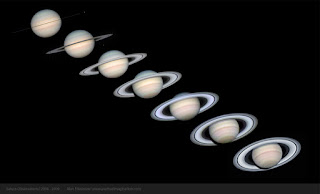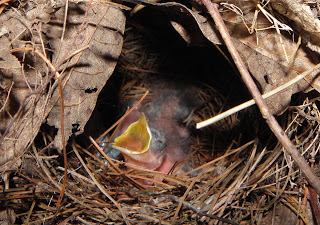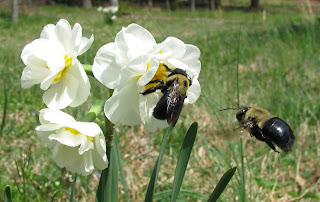Getting
back to intelligent life out there, civilizations on other worlds
could be billions of years older than ours, or have yet to develop.
If humans have come so incredibly far in a few thousand years, what
may have happened on planets where life originated several billion
years earlier? If life evolved there anywhere like it did here, we
can't begin to imagine how advanced they've become.
And
those questions (or speculations, because we yet do not have any
evidence that intelligent life has arisen elsewhere) lead yet to
another fascinating and significant question: If intelligent life is
far ahead of us someplace out there, why have we not yet had it
knocking on our earthly door? Where is it? Humans have played with
the concept of space travel for at least a couple of hundred years.
We've even begun taking baby steps to the Moon and Mars. “Star
Trek” and other science fiction tales describe interstellar and
intergalactic space travel, but is such travel really possible?
Distances
across vasts spans of space are difficult to wrap our heads around.
Even at the speed of light—which we may never approach—the length
of time required to negotiate these distances is daunting. “Star
Trek” engineers could shift the Enterprise into “warp”
speeds: faster than light, but those speeds may forever remain
fiction.
That
said, how about considering an intelligent species on the other side
of the galaxy that is a mere million years ahead of us? Couldn't they
have reached cosmic speeds and brought transit times down to within
maybe hundreds of thousands of years? Or where might we be in space a
million years from now? Such transit times are incredibly
long, but not beyond the reach of a civilization that may have been
around for a few million years.
So
where are these intelligent, advanced space travelers? Why haven't we
heard by now, if they're so much more developed than we are? Couldn't
a super-advanced civilization have spanned the universe by now—or
at least the galaxy? Once again there may be no answer to these
questions... they may even be the wrong ones to be asking. I'm sure
that in another decade or so (a cosmic instant) we'll come up with a
better set of questions. Until then, these are the ones we ask.
Some
people suggest that the absence of any contact can be explained by
the fact that there are no intelligent civilizations out
there. Maybe so, but that is no reason to stop looking. What's more,
humans were once inclined to believe that we were special, that Earth
was the only source of life in the universe. As more and more planets
and life possibilities are found, our specialness may not be true.
One
rather disturbing answer brought up by some researchers as to why
we're still unaware of other intelligent civilizations (if
they're out there) is that there might be a limit as to how long a
technological civilization can endure. The dinosaurs lasted something
like 150 million years. We humans have been around only a couple of
hundred thousand years. We have a long way to go, before we
demonstrate our longevity. There are many informed prognosticators
who raise the possibility that we may not last that much longer. Our
technology races forward, with little thought to its dangers,
virtually out of control. We tend to do things that we later
regret—such as create an atomic bomb or pesticides that are
subsequently shown to cause human birth defects and diseases. So far,
most of the dumb things we have done have been small and on a local
scale, but we are now playing with fire on a planetary scale, via
global warming, habitat degradation, nuclear arms, etc. If we keep up
our pace, we could render Homo sapiens extinct.
Our
extinction is a real possibility. If so, it would terminate Earth's
current experiment of evolving “intelligent” life. Of course, not
all life forms on our planet would be eradicated—many of them are
far tougher and resilient than we are. (Think of ants.) The
evolutionary clock for the development of intelligent life on planet
Earth would simply be reset. There's at east another billion years or
two for the experiment to be rerun, before our sun expands and cooks
all life on the planet.
So
many questions. So many possibilities. Most are beyond the
imagination of our minds. It's an exciting—as well as a
sobering—time in our evolution. We are yet infants in the cosmos.
We have time to correct our dangerous ways and see where evolution
may take us in the far future. It'd be nice if we do, and are able to
join other forms of intelligent life in universal kinship.
Addendum
Here's
a neat way to get a feeling for the extraordinary length of time the
Earth has been around and how short a time we've been here. (The
following simile comes from an online course I'm currently taking:
“Astronomy: Exploring Time and Space,” from Arizona Sate
University, offered by Professor Chris Impey.)
Let
a 1,000 page book represent the age of the Earth; thus each page of
this massive tome represents 45 million
years.
Here are a few fascinating facts about this hypothetical book:
- For the first 10-20 pages of the book, no life is present on Earth. It's a barren planet.
- Fish first appear on page 500; half way through the book.
- The dinosaurs become extinct on page 985. (Only 15 more pages to reach to today!)
- Our ape-like ancestors appear halfway down page 1,000.
- Modern humans enter the scene on the book's very last line.
- Everything we humans pride ourselves on, everything from 40,000 year old cave paintings to the recent discovery of the Higgs boson, is contained within that last word on page 1,000.
All
of modern humanity's accomplishments are enclosed within the very
last word of a 1,000 page book! We humans may consider ourselves the
“last word,” but we sure are the Johnny-come-latelies on the
planet! I hope that our story does not end there. I hope that we find
a way to put out a new edition some day that far exceeds 1,000 pages.

























